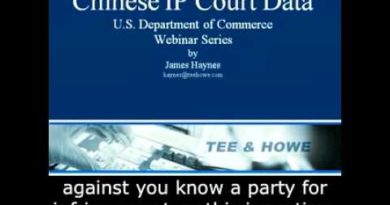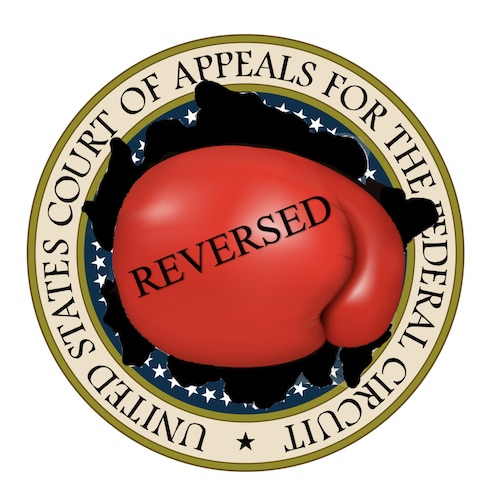PTAB Did Not Improperly Place Burden of Persuasion on Nike to Prove Unpatentability of Substitute Claims
“The CAFC found that because the PTAB and Adidas relied on the same disclosures and arguments to demonstrate that the prior art taught the disputed limitation, the outcome would have been the same regardless of who was assigned the burden of persuasion.”
On September 1, the U.S. Court of Appeals for the Federal Circuit (CAFC) affirmed a decision by the Patent Trial and Appeal Board (PTAB) finding that the PTAB did not improperly place the burden of persuasion for proving unpatentability of proposed substitute claims raised sua sponte by the Board on Nike and that substantial evidence supports the PTAB’s obviousness analysis. The decision comes after two prior rulings by the CAFC in related cases between Nike and Adidas. The present appeal concerned the PTAB’s determination that proposed substitute claim 49 of Nike’s U.S. Patent No. 7,347,011 (‘011 patent) was unpatentable as obvious.
Athletic Footwear and the ‘011 Patent
Conventional athletic footwear is comprised of two primary elements: a sole structure and an upper. The ‘011 patent discloses athletic footwear with a knitted textile upper and a sole structure that is secured to the upper. The only claim left at issue in the present case is proposed claim 49, which depended from claim 47 and recites “a plurality of apertures in the flat knit textile element” that is created by “omitting stitches in the flat knit textile element and positioned in the upper for receiving laces.”
The PTAB’s first final written decision approved Nike’s request to cancel claims 1-46 but denied its request to enter substitute claims because those substitute claims were unpatentable as obvious over the combination of U.S. Patent No. 5,345,638 (Nishida) and U.S. Patent No. 2,178,941 and U.S. Patent No. 2,150,730 (collectively, Schuessler References). Nike appealed (Nike I) this decision by the PTAB and the CAFC found that substantial evidence supported the PTAB’s finding for motivation to combine. The CAFC did identify two errors in the PTAB’s decision. The PTAB’s analysis failed to examine Nike’s evidence of long-felt need and failed to determine if substitute claims 48 and 49 were patentably distinct from challenged claim 19. The CAFC thus remanded back to the PTAB to determine the patentability of substitute claim 49 for further proceedings.
After the CAFC’s decision in Nike I, the court issued a decision in Aqua Products, Inc. v. Matal (Fed. Cir. 2017) that overruled the holding in Nike I that patent owners bear the burden of persuasion regarding the patentability of substitute claims. The PTAB then addressed the two errors that the CAFC identified in Nike I. The PTAB concluded that Adidas proved by a preponderance of the evidence that substitute claims 47-50 were obvious. Relying on new prior art, a textbook by David Spencer (Spencer), the PTAB determined that Nishida did not disclose apertures formed by omitting stitches, but Spencer demonstrated that skipping stitches to form apertures was a well-known technique. Nike appealed this decision again (Nike II) arguing that the PTAB did not give notice that it would rely on Spencer to support its obviousness rejection, violating the Administrative Procedure Act (APA). The CAFC agreed with Nike’s argument and vacated the PTAB’s decision and remanded back to the PTAB to determine the patentability of claim 49.
On remand, the PTAB allowed for additional briefing on three issues: (1) which party bears the burden of persuasion when the PTAB had raised a patentability issue sua sponte; (2) whether Spencer teaches the disputed limitation of substitute claim 49; and (3) whether a skilled artisan would have reason to combine the prior art to achieve the article of footwear recited in claim 49. On the first issue, the PTAB concluded that the burden of persuasion cannot be on the petitioner for a challenge it did not raise. The PTAB determined that Spencer does teach the disputed limitation of claim 49 and thus claim 49 was unpatentable as obvious based on a preponderance of the evidence.
Burden of Persuasion
On appeal, Nike first argued that the PTAB incorrectly assigned itself, rather than Adidas, the burden of persuasion for an unpatentability challenge to the proposed substitute claim that the PTAB raised sua sponte. Nike also argued that the PTAB effectively placed the burden on them to prove that Spencer did not teach the disputed limitation. The PTAB and Adidas in response argued that the PTAB bears the burden on PTAB-raised patentability grounds and that the PTAB did not shift the burden to Nike. Adidas additionally argued that no matter who bears the burden of persuasion it would have been harmless in this case because the PTAB’s analysis simply follows the unpatentability case Adidas had already presented.
The CAFC agreed with the arguments presented by Adidas that the PTAB and Adidas both met the burden of persuasion in this case. The court noted that it need not reach Nike’s argument on whether the PTAB or petitioner bears the burden on PTAB-raised patentability challenges. On remand after Nike II, Adidas submitted briefs arguing that the prior art discloses skipping stitches to form apertures, relying on the same disclosures as the PTAB. The CAFC found that because the PTAB and Adidas relied on the same disclosures and arguments to demonstrate that the prior art taught the disputed limitation, the outcome would have been the same regardless of who was assigned the burden of persuasion.
Nike additionally argued that the PTAB effectively placed the burden on them to prove the patentability of the substitute claim. The court disagreed with Nike’s argument, explaining that Nike misread the PTAB’s decision. The court said the PTAB supported its reasoning, recited Adidas’s arguments, recited Nike’s arguments, and explained why it agreed with Adidas and not with Nike. The PTAB followed the same explanation with respect to motivation to combine, thus the PTAB never placed the burden on Nike. The CAFC found that the prior decisions that Nike relied on were inapt and the PTAB properly did not fault Nike for advancing no evidence.
Obviousness
Nike contested three aspects of the PTAB’s obviousness analysis, arguing that the PTAB’s determination that Spencer taught the creation of apertures by omitting stitches was not supported by substantial evidence, the PTAB’s determination that there was motivation to combine the prior art was based on minimizing waste is not supported by substantial evidence, and the PTAB’s motivation to combine analysis violated the APA. The CAFC disagreed with all of Nike’s contentions.
On the first aspect, Nike argued the PTAB’s finding that Spencer taught the supposed limitations was not supported by substantial evidence because Spencer taught a different technique for forming apertures. The CAFC disagreed noting that Spencer taught a number of techniques that the PTAB interpreted to disclose the technique of the substitute claims and because a reasonable mind might accept this interpretation, it was supported by substantial evidence.
The court held that substantial evidence supported the Board’s findings that a skilled artisan would be motivated to combine Spencer with Nishida and the Schuessler References “because (1) omitting stitches to form apertures was well known and among a finite number of options and (2) omitting stitches is less wasteful than punching holes in existing fabric.”
The CAFC concluded its analysis by holding that the PTAB did not violate the APA because the alleged violation by Nike was not essential to the PTAB’s motivation to combine analysis. Citing Novartis AG v. Torrent Pharmaceuticals Limited (Fed, Cir., 2017), the court held that the PTAB provided sufficient reason to combine Spencer with Nishida and the Schuessler References. The “see also” citations that Nike argues about were only to bolster the PTAB’s analysis and were not the linchpin of their analysis.
Matthew Schutte
is a 2L at the University of New Hampshire Franklin Pierce School of Law. Before attending law school, Matthew attended Purdue University where he earned a Bachelor of Science in […see more]







